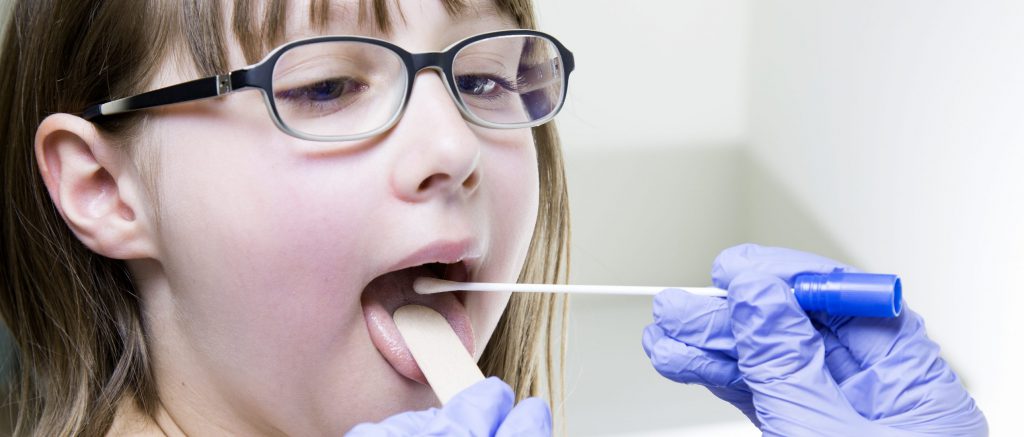Classes are in session, but your children aren’t the only ones doing homework. You should be preparing to help them fight strep throat, which has been surging through schools along with colds, flu and COVID-19.
Caused by and named after a type of bacteria called group A streptococcus, strep throat is a common illness of childhood that can have a draining effect on young patients and their parents. You had strep throat several times as a child, and even now, you can easily recall the sore throat, pain while swallowing, fever and chills it caused. As a parent, you’d love to spare your children that experience. Use these do’s and don’ts to help them avoid strep throat or, failing that, get rid of it as quickly as possible:
- Do encourage frequent handwashing. As with so many contagious illnesses, handwashing is the best method of prevention.
- Don’t allow your children to share eating or drinking utensils. If an infected child has used those items, your children may acquire the bacteria and become ill themselves.
- Do promote proper hygiene. Ask your children to cough or sneeze into their sleeves, especially if they have a sore throat. Contact with airborne droplets containing the bacteria is a key form of strep throat transmission.
- Don’t take complaints of a sore throat lightly. Examine your children for other symptoms of strep throat, including a fever—typically at least 101 degrees—inflamed tonsils, red spots on the roof of the mouth and swollen lymph nodes in the neck.
- Do take your children to their pediatrician or an urgent care clinic as quickly as possible. The sooner a medical provider can confirm whether your children have strep throat—taking samples of their throat mucus with a cotton swab should yield answers—the sooner your children can start taking antibiotics to fight the bacteria.
- Don’t allow your children to stop taking the antibiotics before they’re gone, even if their symptoms improve. Finishing full courses of medication as prescribed helps prevent recurrence.
- Do what you can to keep your children comfortable while the antibiotic works to clear the infection. Ensure they get plenty of rest, serve them sore throat-friendly foods, such as mashed potatoes, and give them over-the-counter pain relievers or lozenges to reduce discomfort.
Antibiotics typically do their job quickly—children who take them for strep throat may begin to feel better in as few as two days. Once your young patients have been on antibiotics for at least 24 hours, body temperature is back to normal, and they’re likely no longer contagious, it’s safe for them to return to school, according to the American Academy of Family Physicians. Then, you can breathe a sigh of relief knowing you aced another parenting exam.
Sources:
